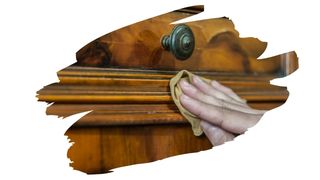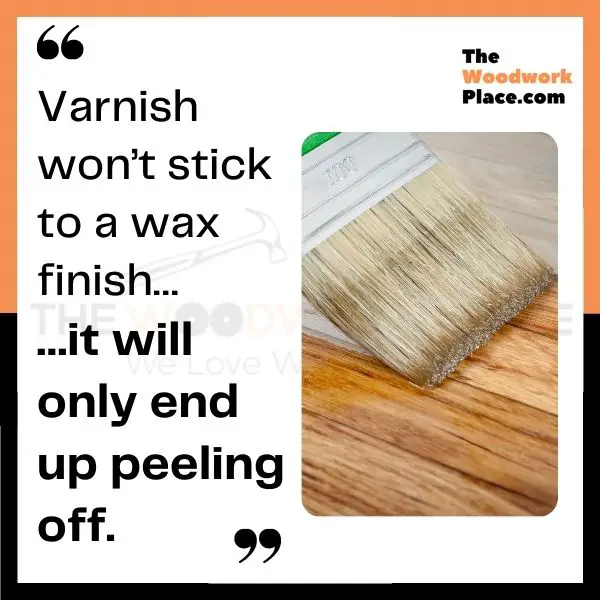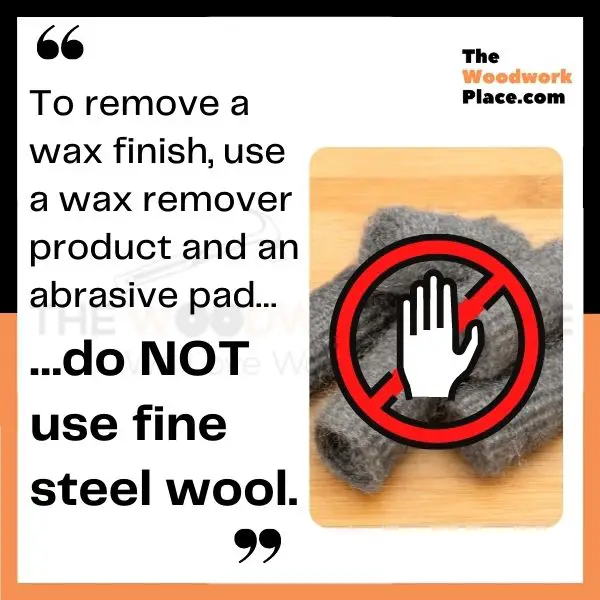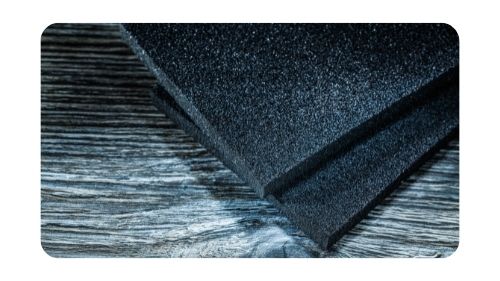Varnish can do a lot of things. It can protect wood by preventing scratches from marring that table top. It can enhance plain wood grain by adding a bit of color to it.
It can even make wood water-resistant, (although not wholly waterproof), by coating it in a sealing finish.
What can’t varnish do?
Well, one thing varnish certainly cannot do is stay atop a wax finish. It doesn’t matter if it’s freshly applied, or on an old antique. Either way, varnish isn’t going to stay in place.
But, this isn’t the fault of varnish. Next to no top coat sealers can stay on a wax finish either.
So, if you want to protect your newly wax coat wood craft, (or refinish that wax furniture piece), what can you do instead?
Well, in this post, you will find out what would happen if you tried to apply varnish onto a wax surface. We also reveal the one thing that will stick to a wax finish (and pretty much anything else).
And stick around to find out what you should do if you want to refinish old waxed wood with new varnish.

This post may contain affiliate links to products that we receive a commission for (at no additional cost to you). Learn more here.
So, You Really Can’t Varnish Wood After Waxing?
Wax finishes are almost universally used as a top coat. This means that they should be the final coat atop a finished piece.
Wax, whether it be waxed shellac or beeswax, simply makes for too slippery a surface for anything to hand onto it.
It doesn’t matter what type of sealer you try to put on wax. It could be polyurethane, lacquer, varnish… you name it, and it won’t stick.
Honestly, the only thing that’ll stick to a wax finish is dewaxed shellac, and that’s only because dewaxed shellac pretty much sticks to anything.
Related Post: Can You Use Shellac To Seal Over A Danish Oil Finish?
You see, if you were to put varnish onto a wax surface, it would peel right off again in short order. The varnish would probably start to take on moisture – and begin to bubble – as well.

Can You At Least Put Clear Varnish Over An Old Waxed Table?
Freshly applied wax doesn’t play well with a top coat of varnish, but that doesn’t mean they get more agreeable with age. This isn’t the most durable of finishes (if at all).
And a wax finish will need to be topped up with a fresh coat every 6-12 months.
It’ll need to be reapplied even more frequently if used on a well-used table surface. But, even a worn wax finish won’t take on any top coat of varnish.
If you have your heart set on a varnish finish, then your only way out here is to first remove as much of that wax finish as possible. Once that is done, you can apply the varnish directly onto the bare wood (or base coat) underneath.
And How Do You Remove Wax From Wood (Before Varnishing)?
Well, there are two parts to doing this;
1). You need to soften the wax up.
2). You then need to scrape the wax off.
Soften The Wax Up
First, you need to soften the wax finish by applying a solvent.
You can use white spirit to this. White spirit is a paint thinner made from mineral spirits. This stuff is made from petroleum distillate, just like food grade mineral oil.
Related Post: Walnut Oil Vs Mineral Oil: Which One’s Better For Your Cutting Board?
However, white spirit is far from food-safe. Instead, this flammable solvent is often used as a degreaser or cleaner, because it can break down grease-like substances (such as wax and oils) with ease.
Alternatively, you can use a specialized wax remover product.
These wax removers are specifically designed with antique furniture in mind, as they aim to remove wax without damaging any of the finish or wood underneath. These products are much less harsh than white spirit.
A great wax remover product can be found in Liberons Wax And Polish Remover. It can handle removing years of wax build-up (due to all of those regular touch-up applications).
And it does a much better job of removing wax, than white spirit, too.
You can check out the latest prices for Liberons Wax And Polish Remover product over on Amazon.com
Scrape Off The Wax
This part involves carefully scraping off the softened wax. And, generally, 0000 fine steel wool tends to be recommended for this part of the job.
However, while steel wool will scrape off the wax, it will also scratch up the wooden surface underneath that wax finish.
So, if you use steel wool to remove wax, be prepared to spend a lot of time buffing out unsightly scratches afterwards.

What’s more, steel itself can damage some types of wood. For example, steel can react with certain compounds found in Oak. These compounds, (also known as tannins), react harshly with steel.
So, if steel wool fibers manage to get into Oaks open grain wood pores, the steel will react with those compounds. And ultimately those steel fibers will leave behind rust stains on that timber table top.
A better method would be to use a fine abrasive pad, rather than fine steel wool. As long as the pad is made from anything but steel, (and is fine enough to scrape off wax), then pads should be used instead.
And you should keep that steel wool well away from open grained wood.
What’s Open Grained Wood? If it’s wood pores are large enough that you can visibly see them, then that wood is ‘open-grained’. Oak, Cedar, and Ash are all open grained types of wood.
Now, abrasive pads are kind of like sandpaper. However, sandpaper is made from fine grit glued onto paper. While abrasive pads are made entirely out of an abrasive material, (typically some fine metal), and appear more sponge-like.

Using a very fine grit pad (around 180 to 320 grit, depending on how much wax build-up there is), you can remove that softened wax easily… and all without scratching it like steel wool can.
You can get some fine grade abrasive hand pads made by VSM Abrasives. These finely gritted pads are made from Aluminum oxide (so won’t react with those tannin compounds). And they will make quick work of wax removal.
Check out the latest prices for these abrasive pad products over on Amazon right here.
So, Here Are The 3 Main Takeaways…
- 1). Varnish won’t stick to a wax finish, it will only end up peeling off.
- 2). If you want to apply varnish, you will first need to remove the wax finish completely.
- 3). To remove a wax finish, use a wax remover product and an abrasive pad. Do NOT use fine steel wool.


